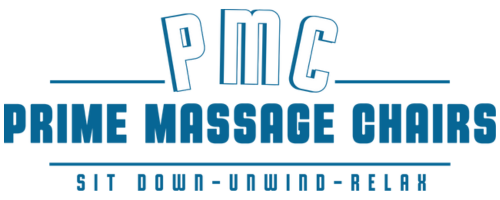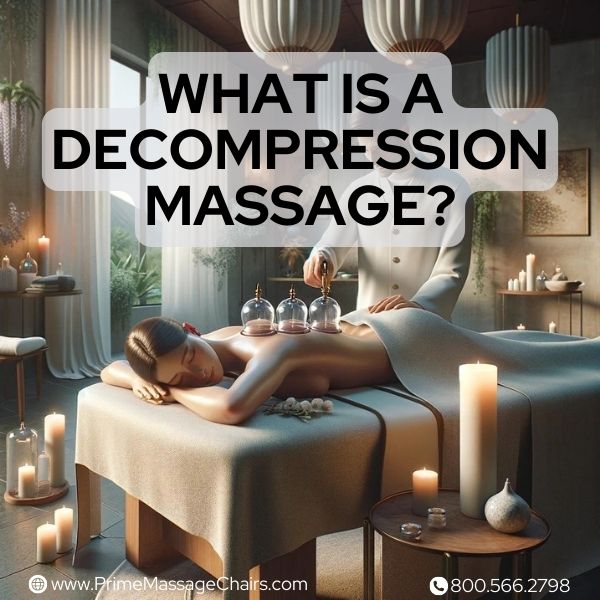
What Is A Decompression Massage?
Exactly what is a decompression massage? Decompression massage therapy is a unique technique designed to alleviate deep-seated tension and restore well-being.
In this article, we'll explore how decompression massages work, their benefits, and who can gain the most from them.
Keep reading; relief might be closer than you think!
Understanding Decompression Massage
Decompression massage takes a unique approach to easing tension in the body. It uses negative pressure, which means it gently pulls tissues apart.
This is different from traditional massages that press and push on muscles.
A therapist might use tools like cups or a massage gun to create this suction effect.
They place the cups on your skin, targeting areas where you feel tightness or pain.
This type of therapy goes deep, reaching layers beneath the surface of your skin. It can free up movement in connective tissues and release trapped nerves or blood vessels.
The goal is to help your body heal itself by improving circulation and reducing pressure on painful spots.
While decompression massage may offer relief for some individuals with herniated discs, sciatica, or chronic back pain by aiming to reduce tension in surrounding tissues, it's important to consult with a healthcare professional before starting any new treatment regimen to ensure it's appropriate for your specific condition.
Differences between Decompression Massage and Other Techniques
Understanding the unique qualities of decompression massage can illuminate its place within the plethora of therapeutic techniques.
It diverges from other massages in application and intent, offering a distinct approach that focuses on reducing pressure in the body's structural system.
Deep Tissue Massage
Deep tissue massage works on the deep layers of muscle and connective tissue. It uses firm pressure and slow strokes.
This massage technique can aid in managing muscle pain and tension, and support the recovery process from injuries as part of a comprehensive treatment plan advised by a healthcare professional.
Sometimes it might be a bit uncomfortable, but it leads to better blood flow and less swelling.

Before a deep tissue massage session, tell your therapist about sore spots. Drink plenty of water too.
Most people can safely enjoy this massage, but check with an expert if you have health issues or past injuries.
Cupping
Decompression massage, including techniques like cupping, contrasts with the intense pressure of deep tissue massage by using negative pressure to lift and mobilize tissues, potentially offering a complementary approach to muscle soreness and tension.
This technique uses special cups that glide over your skin to create suction.
While traditional cupping may leave marks, decompression massage techniques aim to minimize this effect, though some individuals might still experience temporary marks depending on their skin's sensitivity.
The cups lift and relax layers of your muscles in a smooth motion.
This helps lower stress on the tissues compared to other types of massages.

Cupping in decompression massage can help ease muscle soreness without making you feel uncomfortable or leaving bruises.
By using controlled movement, it separates and lifts your connective tissue.
This technique aims to enhance local circulation and may support the body's inflammation management.
It's a different feeling from other techniques since there's no pushing into muscles but rather gentle pulling away for pain relief and relaxation.
Potential Health Benefits of Decompression Massage
It's essential for readers to consult healthcare professionals before beginning any new therapy, especially if they have existing health conditions or concerns.
Exploring the world of decompression massage unveils a treasure trove of potential health benefits that cater to both the body and mind.
This therapeutic approach is lauded for its efficacy in nurturing wellbeing, from alleviating deep-seated pain to boosting physiological functions.
Spine Re-alignment and Back Pain Relief
Decompression massage may help alleviate back pain and promote a sense of relaxation. It's intended to complement, not replace, medical treatments for spinal conditions, and significant structural adjustments should only be made under the guidance of a healthcare professional.
This technique aims to alleviate discomfort by promoting relaxation and reducing tension in the body, potentially affecting areas like spinal discs.
While decompression massage can provide comfort for those with slipped or bulging discs, it should be pursued alongside, and not in place of, guidance and treatment plans provided by healthcare professionals.
Back pain sufferers may notice improvements after decompression therapy sessions.
The process increases blood flow to affected areas, speeding up healing and reducing inflammation.
Regular sessions may support overall well-being and contribute to a balanced musculoskeletal system.
Enhanced Blood Flow
Enhanced blood flow is a key benefit of decompression massage. This massage technique creates suction that draws oxygen-rich blood to your muscles and skin.
More blood means more nutrients and oxygen going to those areas.
Enhanced circulation from decompression massage may support the body's natural processes in managing inflammation and muscle tension.
While decompression therapy may support the reduction of swelling and promote a feeling of relief in sore or tense areas, recovery speed for injuries varies by individual and should be part of a comprehensive treatment plan advised by a healthcare provider.
People with back, neck, or shoulder pain often feel better after these massages because of this improved blood flow.
Their bodies repair themselves faster, restoring flexibility and improving posture without drugs or surgery.
Improved Lymphatic Flow
Improved lymphatic flow is a big plus of decompression massage. This type of massage creates a negative pressure that helps move lymph fluid through your body.
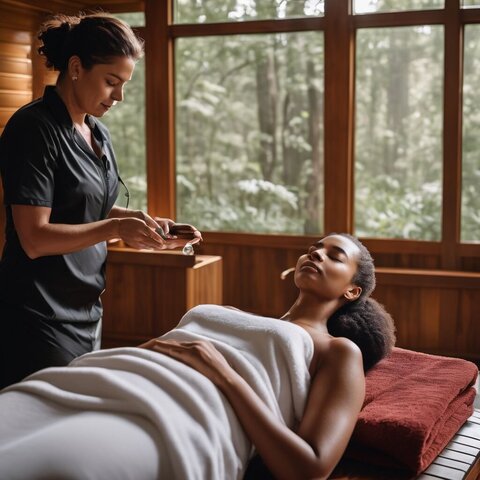
With better flow, your immune system works better and inflammation goes down.
This massage may support the body's natural detoxification processes by promoting lymphatic flow.
Your lymph nodes work hard to get rid of waste and bacteria, so helping them along keeps you feeling good.
After boosting your lymphatic system, muscle discomfort often eases up as well.
Relief from Muscle Discomfort
Decompression massage helps sore muscles feel better. It reaches deep into the muscle tissues. Tight fibers get stretched and relaxed.
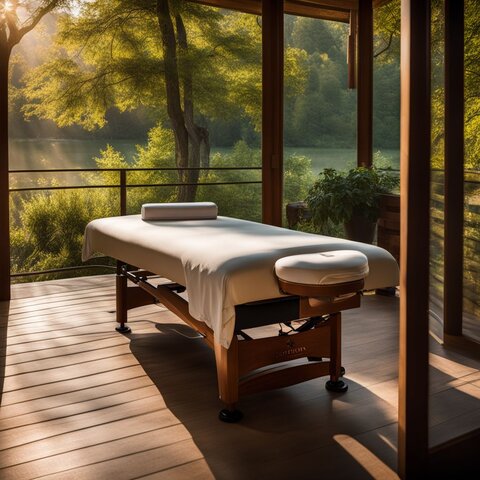
This type of therapy can release knots and ease tension.
Muscle pain often comes from stress or overwork. Decompression massage techniques are designed to address these concerns gently and effectively.
Muscle pain relief is among the potential benefits reported by recipients of decompression massage.
Others like headache relief follow closely behind, offering a reprieve from constant head pain that many seek out through decompression therapy.
Headache Relief
Headaches often come from tension and poor blood flow. Decompression massage targets these problems.
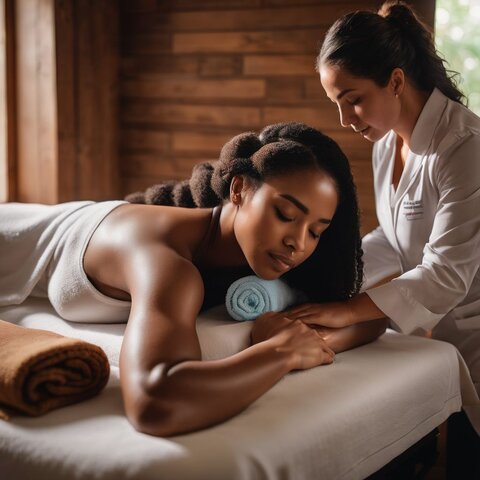
The therapist's hands work to relax tight muscles in your head, neck, and shoulders.
This helps relieve the pressure causing pain.
Better circulation also means more oxygen gets to your brain, easing headaches.
Plus, lowering inflammation can stop them before they start. If you struggle with constant headaches, this massage might soothe that throb in your skull.
Think about how relaxed you could feel after a good night’s rest without a headache—the next section explores improved sleep quality from decompression massages.
Improved Sleep Quality
Easing headaches often leads to better rest. Decompression massage therapy works wonders for sleep quality. It soothes your body, eases pain, and helps your mind relax.
As you lie on the table, the therapist's skilled hands promote a state of calmness.
This calming effect allows you to drift into deeper, more restful sleep.

The practice releases endorphins too. These natural chemicals fight off stress hormones that can keep you awake at night.
With lower stress levels, your body finds it easier to fall asleep and stay asleep through the night.
People with a lack of sleep find decompression massage especially helpful in getting the rest they need.
Decompression massages aim to promote relaxation and relief throughout the body, potentially affecting both muscular and nervous system relaxation, though individual experiences may vary.
The gentle pressure improves blood flow and relaxation throughout your body leading up to bedtime.
Unwinding before bed is essential for good-quality sleep – something this therapy offers very effectively.
Reduced Mental Fatigue
Decompression massage therapy works wonders for the mind. It triggers the body's rest and digest system, helping you feel calm and relaxed.
This type of massage lowers stress hormones that can make you feel tired or anxious.
With less stress, your mind gets a break, and you can think more clearly.
Getting good sleep is key to fighting mental fatigue, and decompression massage helps with this too.
After a session, many people find they sleep better at night. Better sleep means you wake up refreshed with more energy for the day ahead.
Who May Benefit from Decompression Massage?
Decompression massage isn't just for those in the throes of severe back pain; its versatile nature makes it ideal for a wide range of individuals seeking relief and recovery.
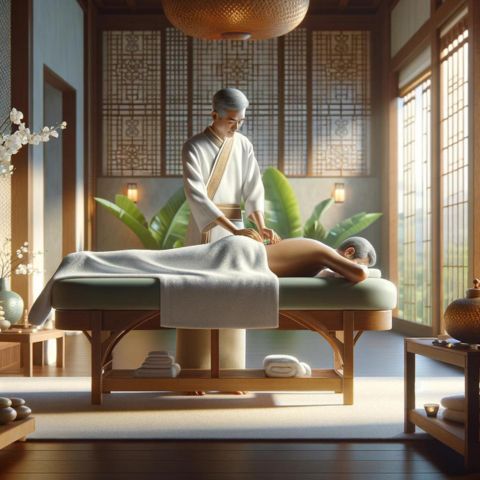
Whether you're facing the physical demands of an athletic lifestyle, grappling with age-related discomfort, or simply looking to maintain a well-aligned spine through proactive care, this therapeutic approach holds potential benefits tailored to your body's needs.
Individuals with Chronic Back Pain
People with chronic back pain may find relief through decompression massage.
This therapy aligns the spine and eases discomfort in the back.
It targets areas that hurt due to long-term stress or injury.
A trained therapist gently stretches the spine, which can reduce pressure on discs and nerves.
For those who often feel stiff or sore in their back, this technique can restore movement and help improve posture.
Regular sessions of decompression massage are sometimes suggested to keep the back feeling good.
Usually, you might go once or twice a week depending on your needs.
Athletes and active individuals could also benefit from this kind of massage.
Athletes and Active Individuals
Some people that are more active, like athletes, push their bodies hard. This can lead to muscle soreness and injuries.
Decompression massage helps them recover faster. It reduces stress on muscles and joints.

Active people may find relief from the aches of workouts or games through this therapy.
It's also great for self-care, keeping athletes ready for the next challenge.
Are you always moving, lifting, or competing? Decompression massage might be what you need. It loosens tight muscles and eases stiffness after physical activities.
You'll likely feel less burnt out with regular sessions, helping maintain top performance levels.
Aging Adults
Aging adults often face back pain and spine issues. Decompression massage can help them get relief from these pains.
It realigns the spine, which is a big help for older people with posture troubles.
Better blood flow comes from decompression massage too. This helps reduce swelling and soothes tight muscles in aging bodies.
It also brings on a calm feeling that can make sleep deeper and minds less tired.
Older adults dealing with headaches may find they happen less often after these massages.
How to Prepare for a Decompression Massage Session
Getting ready for a decompression massage helps you get the most out of your session.
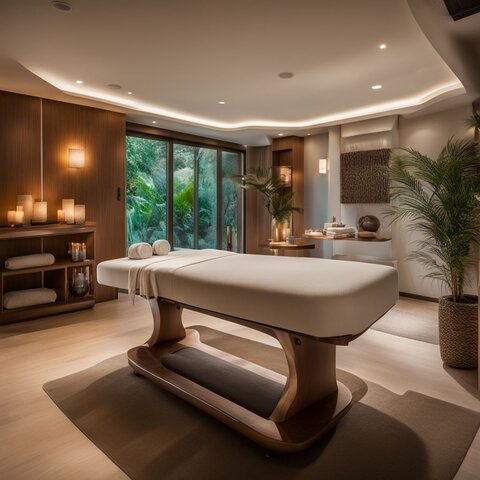
Here are steps to follow before your appointment:
- Avoid eating bulky, heavy meals at least two hours before your massage. A full stomach can cause discomfort while lying on the massage table.
- Drink lots of water in the hours leading up to your session. Hydration can help flush toxins from your body after the massage.
- Take a warm shower if possible. Heat can loosen muscles and enhance feelings of relaxation during the therapy.
- Wear loose, comfortable clothing to your appointment. You'll be able to relax better and change easily before and after the massage.
- Share any medical history with your therapist, especially if you've had issues like deep vein thrombosis or recent surgeries. This step ensures they provide a safe and personalized experience.
- Discuss any specific pain points or areas of tension with your therapist. Highlighting these can help them focus on relieving chronic pain or stressors in those regions.
- Arrive a few minutes early to fill out any necessary paperwork without rushing. This can also give you time for deep breathing to calm any pre-massage nerves.
- Consider practicing relaxation techniques such as meditation or visualization beforehand. Starting the session in a relaxed state may increase stress relief benefits.
FAQs
What is a decompression massage?
A decompression massage is a therapeutic technique that aims to reduce stress and inflammation by using negative pressure to gently stretch and mobilize tissues throughout the body, including but not limited to the spine.
Who can perform a decompression massage?
Only certified or licensed massage therapists with training in this specialized technique should do decompression massages to ensure safety.
Can pregnant women get a decompression massage?
Pregnant women should always check with their primary care provider before receiving any type of massage, including decompression treatments.
How does decompression therapy help with back pain?
Decompression therapy is designed to relieve pressure on spinal discs and nerves, potentially reducing pain from conditions like herniated disks, as part of a comprehensive treatment plan.
Are there risks involved with spinal decompression massages?
Risks like bruising and soreness are minimal but can happen; people with conditions like osteoporosis, implants, or deep vein thrombosis should avoid this treatment without doctor approval.
Is decompression different from regular massages like Swedish Massage?
Yes, it's different because it specifically targets the human spine to relieve pressure while regular massages focus more on overall relaxation and muscle tension release.
Conclusion
Decompression massage is a complementary therapy designed to assist in relieving deep muscle tension and promoting well-being.
It is most effective when used as part of a broader health management strategy, ideally under the guidance of healthcare professionals.
Responses to massage therapy, including decompression techniques, can vary widely among individuals.
Remember to consult a professional if you have any medical concerns before trying decompression massage.
Disclaimer:
We do not provide medical advice. The content of this article, including text, graphics, and other material, is for informational purposes only. It is not intended to be a substitute for professional medical advice, diagnosis, or treatment. Always seek the advice of your physician or other qualified health provider with any questions you may have regarding a health condition. Never disregard professional medical advice or delay in seeking it because of something you have read in this article or on our website.
